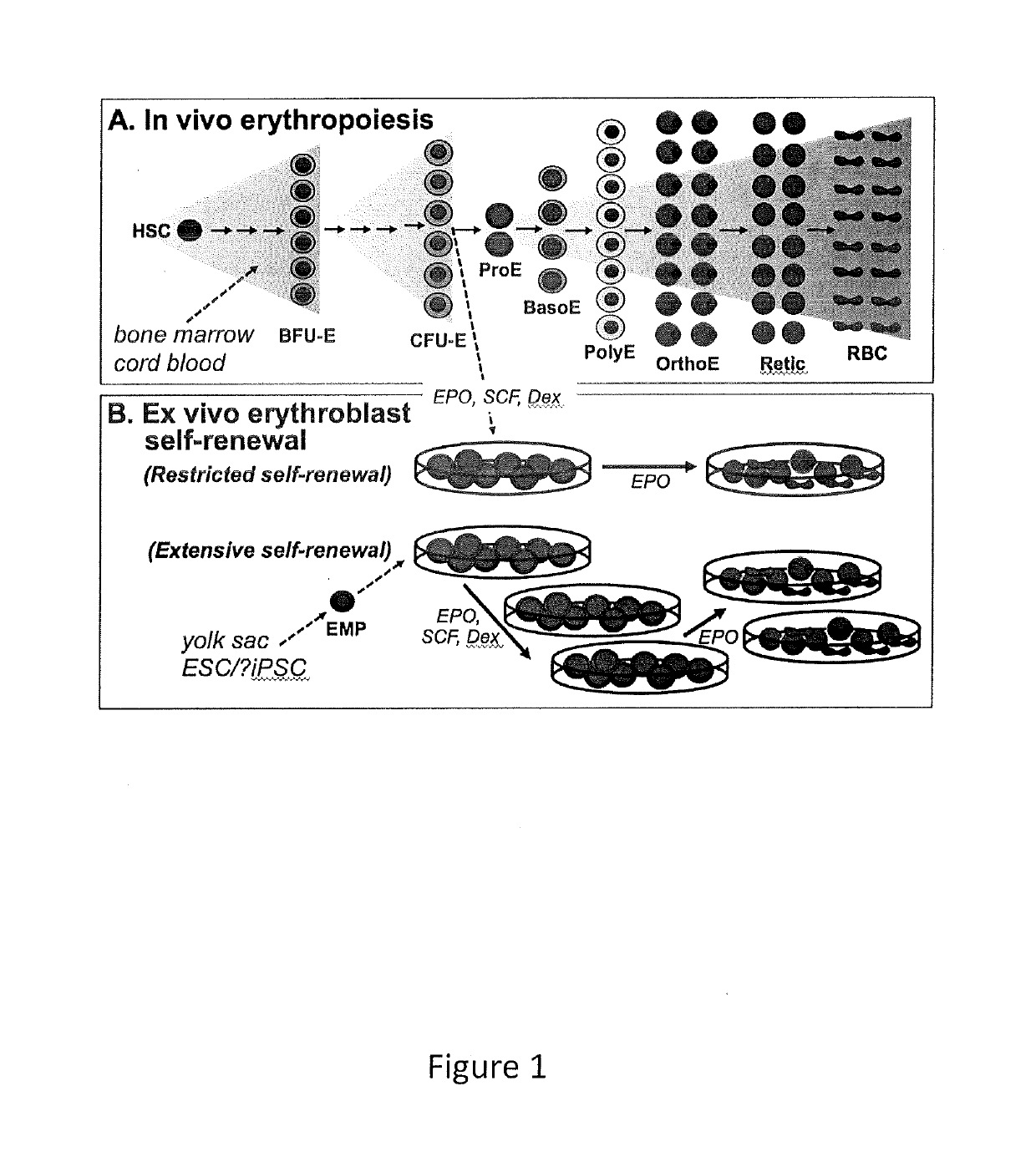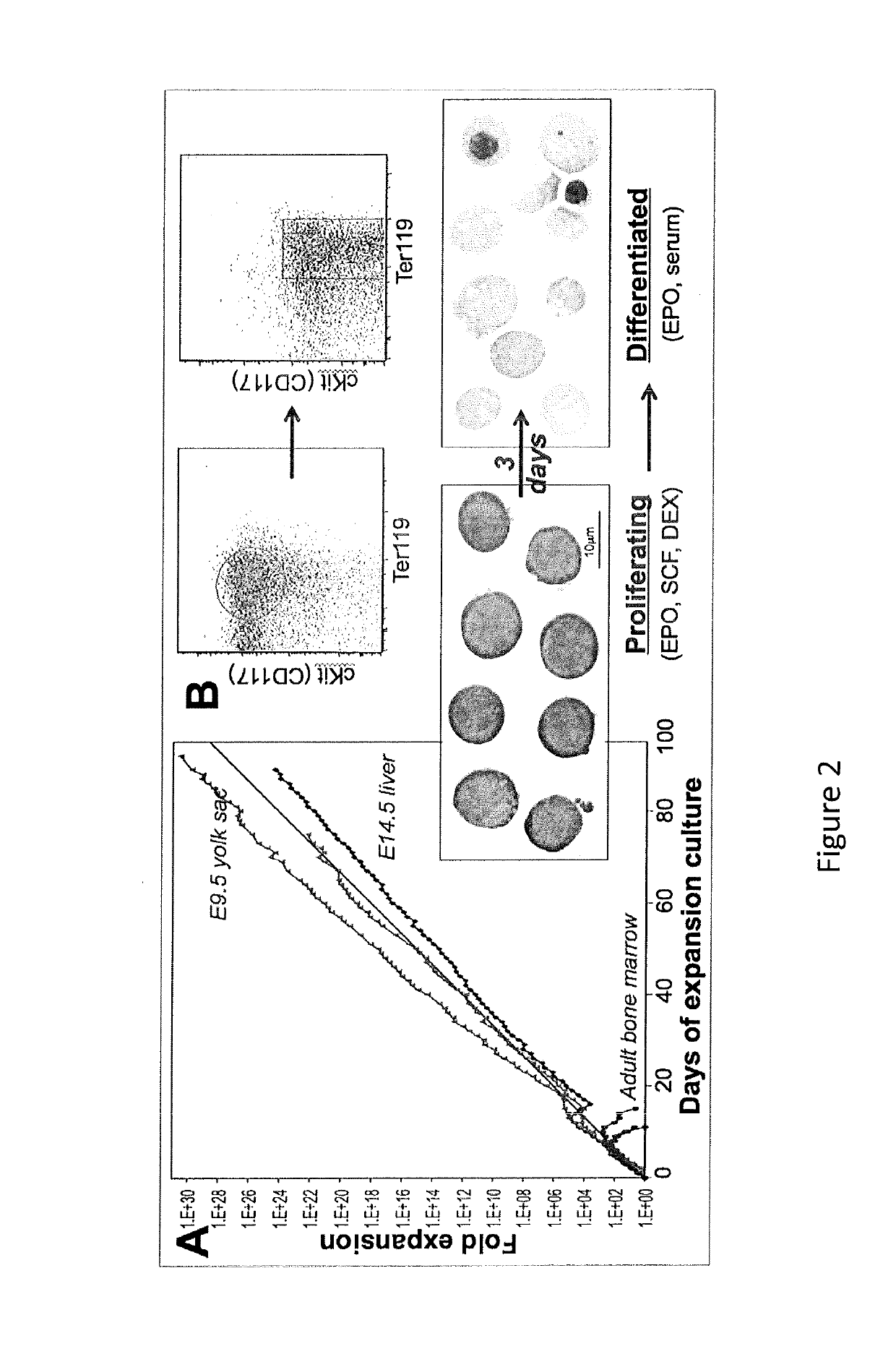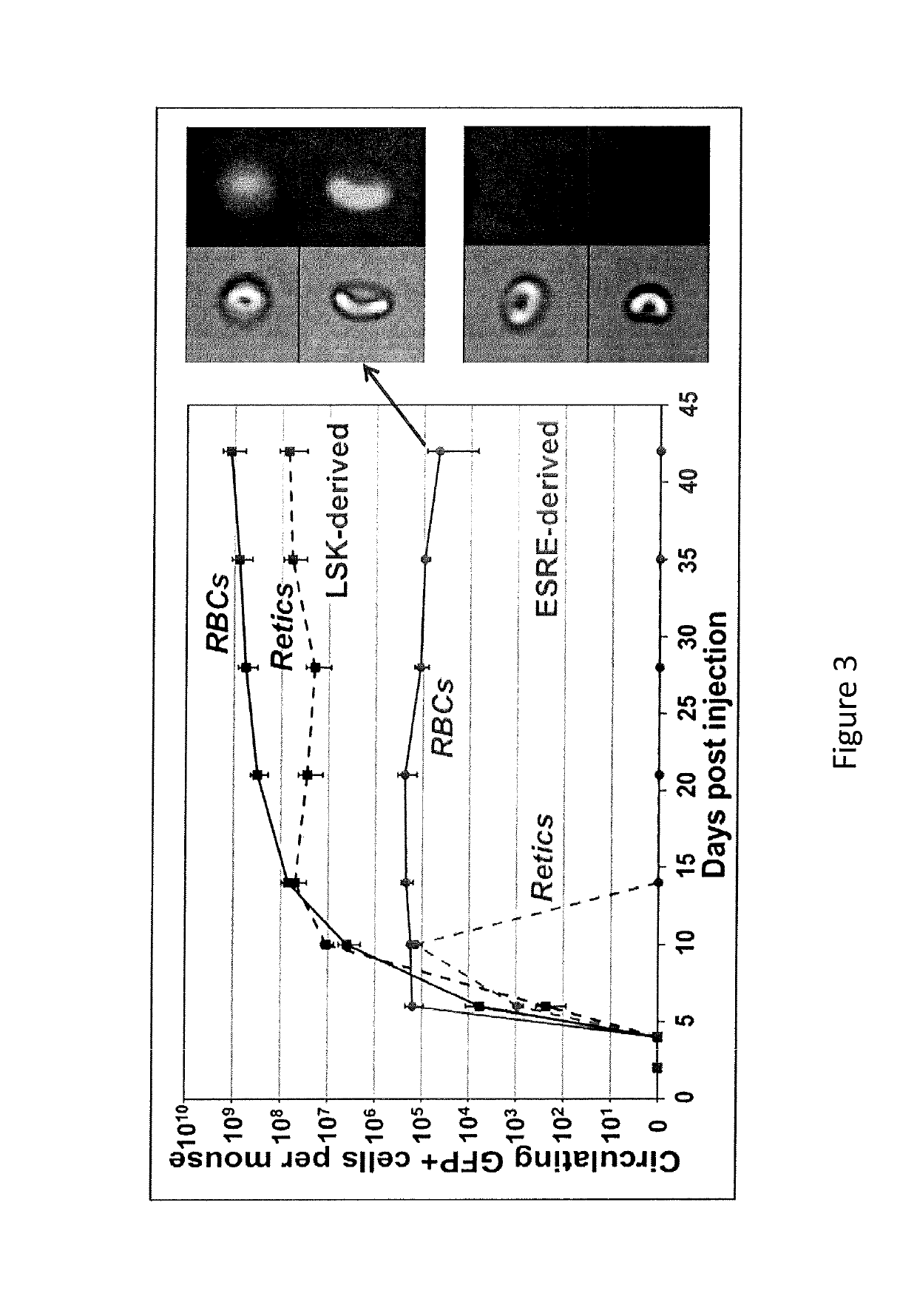Human extensively self-renewing erythroblasts (ESRE)
a technology of erythroblasts and erythroblasts, which is applied in the field of human extensively self-renewing erythroblasts, can solve the problems of limited methodology for generating erythrocyte progenitors, high screening costs, and limited scalability of es cell-based approaches to generate erythrocyte progenitors, and achieves the effect of decreasing the level of detectable polypeptides and increasing the detection level
- Summary
- Abstract
- Description
- Claims
- Application Information
AI Technical Summary
Benefits of technology
Problems solved by technology
Method used
Image
Examples
experimental examples
[0187]The invention is further described in detail by reference to the following experimental examples. These examples are provided for purposes of illustration only, and are not intended to be limiting unless otherwise specified. Thus, the invention should in no way be construed as being limited to the following examples, but rather, should be construed to encompass any and all variations which become evident as a result of the teaching provided herein.
[0188]Without further description, it is believed that one of ordinary skill in the art can, using the preceding description and the following illustrative examples, make and utilize the compounds of the present invention and practice the claimed methods. The following working examples therefore, specifically point out the preferred embodiments of the present invention, and are not to be construed as limiting in any way the remainder of the disclosure.
example 1
ly Self-Renewing Erythroblasts (ESREs)
[0189]The results presented herein show the development and characterization of extensively self-renewing erythroblasts (ESREs). The results demonstrate that ESREs are cells that represent primary erythroblasts, but possess apparently limitless proliferation potential while maintaining the ability to produce enucleated red blood cells (RBCs). Therefore ESREs offer the promise of serving as the foundation of a viable system for the ex vivo production of blood.
[0190]Experiments were designed to (1) allowing the production of human RBCs; (2) demonstrate that the currently prohibitive costs of large-scale culture, involving highly expensive growth factors and reagents, can be reduced to a more practical level; and (3) demonstrate that ESREs can be used as an ex vivo model for erythropoiesis with practical benefits in drug screening and bioengineering.
Definitive, Steady-State Erythropoiesis
[0191]Humans synthesize more than 2 million RBCs every second...
example 2
Es to Screen for Activators of Human Fetal Globin Expression
[0226]The characteristics of ESREs—rapid proliferation with maintenance of normal ploidy, along with the ability to terminally mature with high efficiency to produce RBCs—provide a number of practical applications. For example ESREs can be derived with stably integrated transgenes or subjected to siRNA knockdowns in order to derive RBCs with artificially engineered protein compositions; moreover, the ability to derive ESREs from ES or iPS cells allows for targeted alterations within endogenous gene loci as well. Such manipulations represent applications of ESRE technology.
[0227]In some instances, ESREs are used to perform a high-throughput screen for chemicals capable of influencing the expression of human β-globin genes. β-hemoglobinopathies, which involve either a mutated β-globin gene (as in sickle cell anemia) or significant decreases in adult β-globin gene expression (as in deletion β-thalassemias), represent the most ...
PUM
| Property | Measurement | Unit |
|---|---|---|
| concentration | aaaaa | aaaaa |
| concentration | aaaaa | aaaaa |
| concentration | aaaaa | aaaaa |
Abstract
Description
Claims
Application Information
 Login to View More
Login to View More - R&D
- Intellectual Property
- Life Sciences
- Materials
- Tech Scout
- Unparalleled Data Quality
- Higher Quality Content
- 60% Fewer Hallucinations
Browse by: Latest US Patents, China's latest patents, Technical Efficacy Thesaurus, Application Domain, Technology Topic, Popular Technical Reports.
© 2025 PatSnap. All rights reserved.Legal|Privacy policy|Modern Slavery Act Transparency Statement|Sitemap|About US| Contact US: help@patsnap.com



